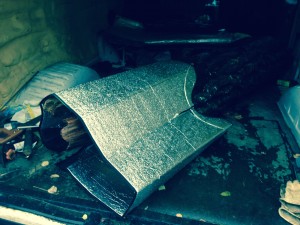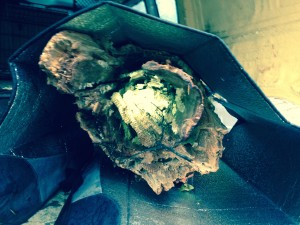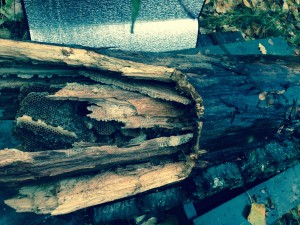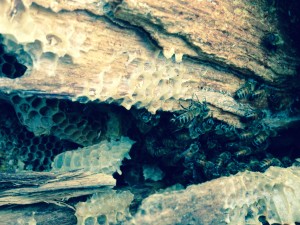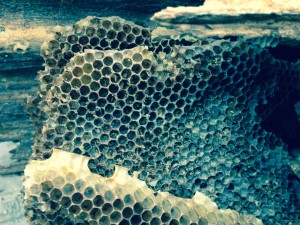Feral Bees in Alaska, no way!!
It was pretty late in summer early fall of 2014 here in Alaska, leaves were shed from the trees, and I got a call from a home owner looking for a beekeeper. Usually I get lots of swarm calls in early summer but not this late, it was frosting at night. The gentleman told me that during the last wind storm that had come through a cottonwood tree was blown over, and when he got around to cleaning up a few days later he noticed bees and comb in a busted section of the trunk.
I told him I would be right over, and my son and I hurried over. I only had to drive about two miles to reach the property that the bee tree was at. he directed me to the downed tree, and sure enough it was a bee hive in tree. It was in pretty lame shape, combs all busted to pieces, most of the bees were gone, all the stores were already robbed out. it was pretty dismal condition, but my son and I covered them with a shield and picked up the trunk and placed it in the back of my 3/4 ton van. I found a place to set it on my own property and kept it covered. I had no expectations that they would live, the cluster was to small. In a few days they had disappeared, but I am all excited about this find.
This colony appears to have been in this tree for at least a few years, or was occupying and old dead out nest. Anyway I have some photos to share and some measurements I took of the cell sizes of the worker brood comb. Here are some photos;
Log in the back of my van, pictures above, and below.
The log as it sits now.
There’s that hand full of bees.
Comb looks well used and old, indicating that the bee may have been there a while, at least a few years.
Comb cell size measurements.
I had three combs that I measured the cell size of that were pretty dark, indicating the colony was there for at least a few years, if not longer, or was a recent tenant of an old bee cavity. I measured ton cells across, in three directions, from cell wall center to cell wall center, as per my mentor Dee Lusby of Arizona. After measuring the cells I added them up, and divided them all together to gat the average cell size of the worker brood cells. Here are the measurements I gathered.
- 53.25mm
- 51.47mm
- 53.00mm
- 51.67mm
- 53.88mm
- 51.00mm
- 50.81mm
- 52.80mm
- 53.13mm
First three averaged out at 52.57mm, second three was 52.18mm, and the last three was 52.24mm. All three averages averaged out at 52.33mm. That is roughly the same size Pierco frames and foundation measure out. That is also sort of the measurements that Dee Says on her cell size zone map say may be close to the size bees should draw here in Alaska. Really they should be a little bit smaller to help with diseases and parasites. At any rate this was a colony, that established itself, and may have been in this tree for a number of years.
Please visit my GUEST MAP
